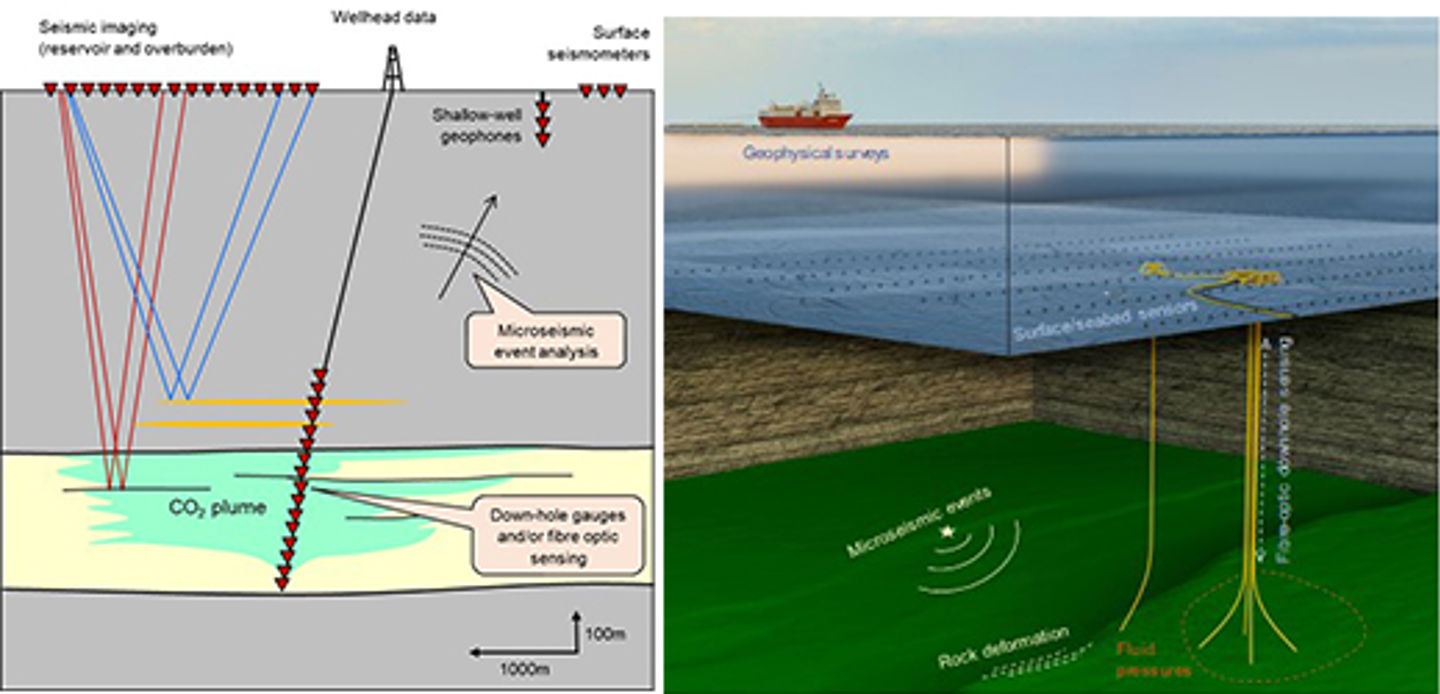Work Package 4: Monitoring

WP lead: Anne-Kari Furre, Equinor
The main objective of WP4 is to develop more intelligent methods for monitoring rock strain and fluid pressure.
Detailed analysis of rock-failure risks with a corresponding monitoring plan will be done for one or two sites . However, the insights for an improved monitoring scheme design can be applied to all sites, with the final report focussed on ‘Multi-site’ learnings for wider application.
Task 4.1 Determine initial ‘round 1’ rock failure risks for each case study site
For each case study the stratigraphic sequence of the site will be described in terms of the mechanical stratigraphy, fluid pressure state, critical faults and levels of background seismicity. Initial rock failure limits will be determined with uncertainty bounds. Based on this, key knowledge gaps will be identified, and an initial assessment of the likely monitoring array design will be made, including comparison of land versus sea-bottom versus borehole installations.
Task 4.2 Determine ‘round 2’ rock failure risks for each case study site
Rock failure risks for each case study site will be updated to determine how uncertainties and risk factors have changed with the addition of new data from the seismicity analysis, rock constitutive experiments and/or geomechanical models. The key objective is to identify critical monitoring positions in the system. Following this, a review of monitoring strategies and improvement recommendations, including economic considerations will be performed.
Task 4.3 – Design improved monitoring scheme using ‘right-time and right-place’ detection
Using the ‘round 2’ rock-failure risks model from, we will design the optimal ‘right-time and right-place’ detection system. Options will include use of surface seismometers or ocean bottom nodes, and where possible downhole sensors or DAS. Conventional surface seismic surveys and conventional monitoring of pressure, flow rates and temperatures at the wellhead will be used for site descriptions and background data.
Task 4.4 – Integration of improved monitoring system with containment risk evaluation
In this task, the insights will be integrated with risk quantification to achieve an improved quantification of storage containment risks. The improved stress-strain system understanding, should lead to reduced risks by (a) improved quantification and (b) improved targeting of monitoring and control systems. Ideally the monitoring system will be sufficient to detect critical containment risks identified from the risk analysis.